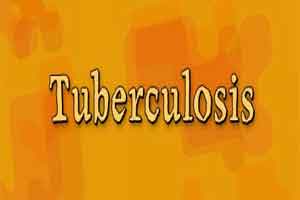- Home
- Editorial
- News
- Practice Guidelines
- Anesthesiology Guidelines
- Cancer Guidelines
- Cardiac Sciences Guidelines
- Critical Care Guidelines
- Dentistry Guidelines
- Dermatology Guidelines
- Diabetes and Endo Guidelines
- Diagnostics Guidelines
- ENT Guidelines
- Featured Practice Guidelines
- Gastroenterology Guidelines
- Geriatrics Guidelines
- Medicine Guidelines
- Nephrology Guidelines
- Neurosciences Guidelines
- Obs and Gynae Guidelines
- Ophthalmology Guidelines
- Orthopaedics Guidelines
- Paediatrics Guidelines
- Psychiatry Guidelines
- Pulmonology Guidelines
- Radiology Guidelines
- Surgery Guidelines
- Urology Guidelines
Signs TB Can Persist in Lungs Despite Treatment: Research

Patients with active tuberculosis of the lungs, the infectious form of the disease known as pulmonary tuberculosis (TB), are typically treated with several medications for a period of six months. However, clinicians currently lack a definitive way to determine when antibiotics have effectively cured a patient of the disease. It has been known that the microbe that causes TB,Mycobacterium tuberculosis, can persist in the lungs even after patient tissue samples test negative for the bacteria. In new research appearing in Nature Medicine, intramural researchers at the National Institute of Allergy and Infectious Diseases (NIAID), part of the National Institutes of Health, together with NIAID grantees, found through the use of positron emission tomography/computerized tomography (PET/CT) scanning that TB lesions can remain in the lungs long after treatment with antibiotics has been completed.
The scientists used PET/CT to examine the lungs of 99 patients with pulmonary TB in South Africa before, during and after treatment with a typical regimen of TB medications. For tuberculosis, PET/CT can be used to measure the level of inflammation, or lesions, in affected areas of the lungs. Previously, NIAID researchers found that PET/CT could be used to successfully predict the effectiveness of TB drug regimens.

Disclaimer: This site is primarily intended for healthcare professionals. Any content/information on this website does not replace the advice of medical and/or health professionals and should not be construed as medical/diagnostic advice/endorsement or prescription. Use of this site is subject to our terms of use, privacy policy, advertisement policy. © 2020 Minerva Medical Treatment Pvt Ltd